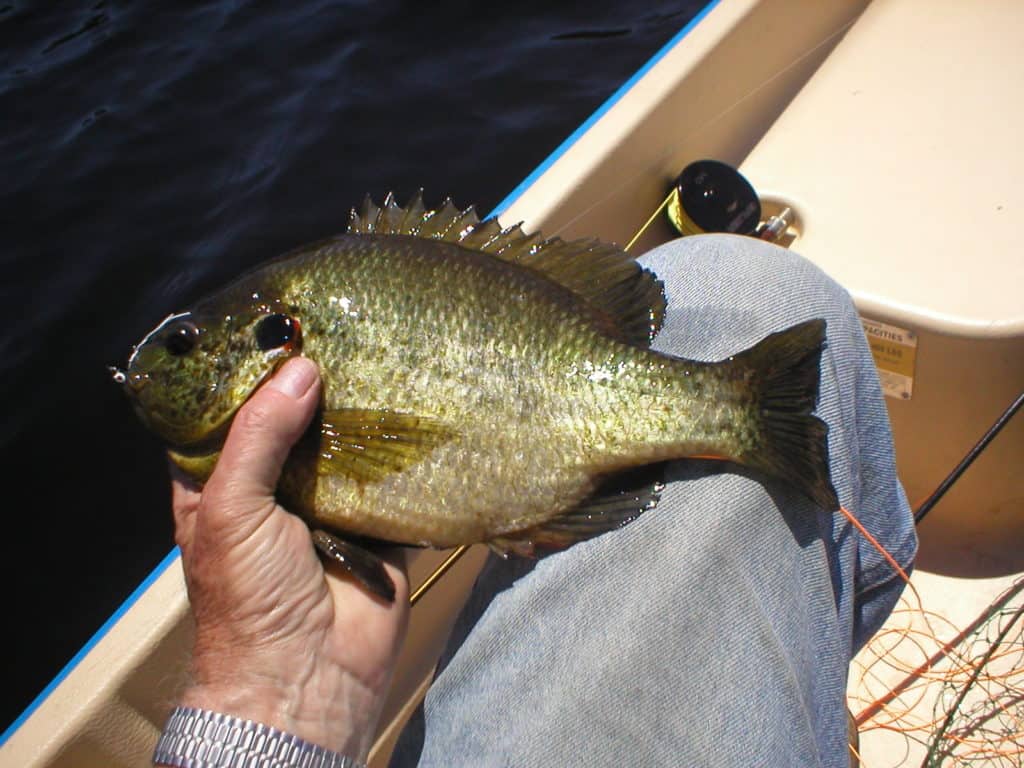Sporting Life

A Fish Named Sparky
By Dennis Doyle
I’ve lived with various pets over my over 50 years on the Tidewater, many of them quite interesting. One in particular is still sharp in my memory, though it was a few years ago: a fish named Sparky.
Sparky was a big redear sunfish, sometimes called a shellcracker, and I caught him on a small black popper at a little lake in nearby Delaware.
He was about 11 inches and as powerful as this species comes. It took forever on my light, six-weight rod to convince him to the canoe. Dropping him in a 5-gallon bucket of pond water, I marked it for dinner that night, but upon reaching home in Annapolis I discovered the ruffian still alive and frisky.
Since we already had a 25-gallon aquarium bereft of fish but clean and ready, I filled it with tap water along with the pond water in his bucket and deposited him there. He took to it as if born in it. Feeding him crickets and worms (he would eat a whole nightcrawler with a couple of gulps) he soon became a fixture of the family.
A male with all the brilliant, bright chest and flank colors of his gender, he soon associated the sight of an approaching person with the possibility of another tasty meal. Dashing about his transparent pool, throwing small geysers about and making as big a spectacle as he could, thus earning the name Sparky, he was soon eating right from our hands.
Eventually we had to put him on a diet, not just because he became fat, but rather we got tired of cleaning out the aquarium filter every other day, he processed his food like lightning as well as growing to almost 12 inches.
My wife, a few years prior, had built a small fish pond in our front yard complete with lily pads and a waterfall and we began to transfer him there each spring for the summertime. He seemed to relish it as well as keeping the bugs down, though he did prove hard on the smaller goldfish and tadpoles. He still accepted food from our hand but was obviously happier in his new environment. However, he had no trouble going back to his old home as the colder weather set in.
Some two or three years later, as we prepared to transfer him back to the aquarium for the winter, we discovered he was missing. My wife noted that she had chased a large, great blue heron off the pond a few days prior and we had to face one of nature’s dark truths. One species is always prey for another.
I tried to replace our Sparky with a sunfish or bluegill but it always ended in failure. None would accept the confines of the aquarium nor the close presence of human caregivers and we eventually had to release each of them back into the wild.
It turned out that Sparky was one of a kind, something we had suspected all along.
Note: Possession of live, wild game animals and fish in Maryland may be prohibited by law. Check with DNR for regulations on keeping otherwise feral critters as pets and companions.
*****
Fishfinder:
The Bay is coming alive with hungry fish. Rockfish, many of them keeper-sized, are schooling for their fall extravaganza, and white perch as well are feeding up for wintertime. It’s also time to get your share of croaker and spot in the freezer, as they’ll be leaving for the ocean soon. Rock are falling to chumming and jigging soft plastics as well as topwater plugs and shallow running crankbaits in the early morning and evenings. Schools of Spanish mackerel and bluefish are charging about here and there from Man-O-War Shoal near Baltimore Harbor down past Thomas Point Light then over to the mouth of the Eastern Bay. Look for the birds. Throwing shiny metal jigs or trolling medium to small silver or gold spoons, all at six or more knots will attract attacks. Slower speeds might get some attention from stripers but usually not the toothy fellows. Short wire leaders are also suggested. Crabbing remains mostly miserable.
